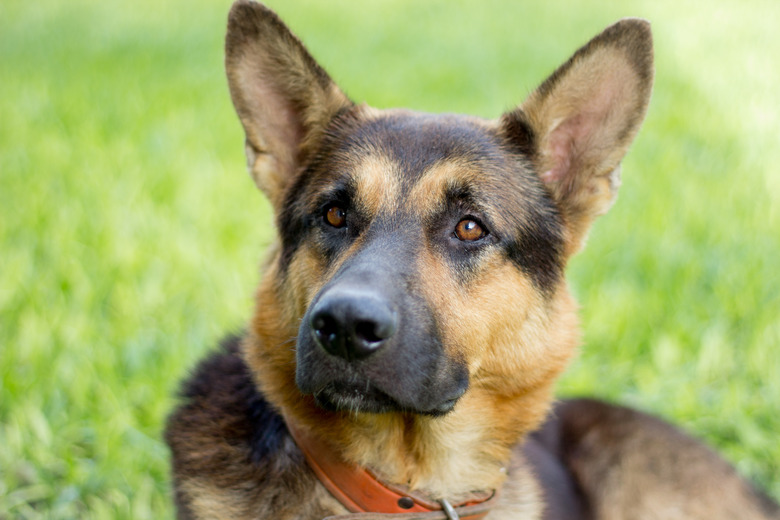How To Tell A Purebred German Shepherd
When it comes to superlatives, few breeds exceed those used to describe the German shepherd. Loyal, noble, intelligent, courageous — this is the kind of description politicians aim for but so rarely achieve, and yet they fit a well-known working dog. Even if your own dog is all that and more, if you don't have his papers you may wonder if he's a purebred German shepherd or just an exceptional canine specimen. A little detective work lets you know one way or the other.
German shepherd breed standard
German shepherd breed standard
Check your dog's appearance against the breed standard. While not every purebred shepherd meets the exact standard — which means the animals can't compete in conformation dog shows — that doesn't necessarily mean he's not a purebred dog. However, if he's way off the mark, he's probably not a purebred German shepherd.
The American Kennel Club calls for a height of between 24-to-26 inches for male dogs and 22-to-24 inches for females. Purebred German shepherds are longer than they are tall, with an ideal proportion of 10-to-8.5. The head is noble — there's that word again — strong but not coarse, and should have a distinct masculine or feminine appearance based on the animal's gender. The dog's withers, or point of the shoulder, are higher than the level back.
German shepherds come in a variety of shades, and the breed standard is fairly flexible when it comes to canine color. However, there is one big exception. While some breeders may advertise "white German shepherds," these dogs do not meet the AKC breed standard. The white coat is the result of a recessive gene.
Breeds that resemble the German shepherd
Breeds that resemble the German shepherd
It's possible your dog is a purebred, but not a German shepherd. Three breeds, in particular, resemble German shepherds: the Belgian Malinois, the Belgian tervuren and the Swedish vallhund. The latter is much smaller than a German shepherd, much like a mini-version but similar in appearance. The Belgian Malinois is the same size as the German shepherd, but their coat ranges from "rich fawn to mahogany," and they sport black ears and mask.
The Belgian tervuren is also the same size as the German shepherd and Belgian Malinois but has a longer head than the former. This dog has a more abundant coat, with telltale longer hair around the neck, the tail, and the thighs. The coat length is more pronounced in male than female dogs. While Germans shepherds might have long hair, the AKC considers it a breed fault.
DNA testing
DNA testing
Without papers, the only surefire way to know if your pet is indeed a purebred German shepherd is via DNA testing. As Vetstreet explains it, the entire process is fairly simple. Order a DNA kit from a reputable company and use the swab provided to obtain a sample of your dog's cheek cells. After collecting the sample by swabbing the inside of your dog's mouth, mail it to the testing laboratory in the envelope provided.
Some DNA kits require blood samples, which is done by your veterinarian. Either way, you should receive the results in one to two months. If your dog is indeed purebred, the test is definitive. If she's a mixed breed, you'll find out approximately what percentage of her DNA comes from German shepherd ancestry.
No matter whether he's a purebred or a mutt — and mutts are noble, too — you'll learn even more important information, such as her genetic health information. German shepherds are prone to several common diseases, including hip dysplasia, heart disease and a particularly devastating illness known as degenerative myelopathy. If you and your dog are lucky, she won't inherit any of these problems from her German shepherd ancestors.
